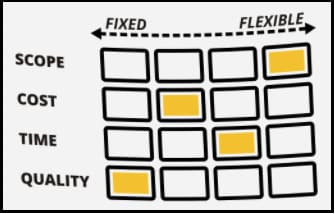Learn How to Slide Through to Success!
One of the most useful tools WorkingMouse uses during the development process is a Success Slider. First coined in Rob Thomsett's brilliant book "Radical Project Management", the concept refers to a tool used to help all project stakeholders agree on the success criteria and priorities of a task. At WorkingMouse we use Success Sliders as a way to educate our Partners and enable them to collaborate with their assigned project teams in order to come to a shared understanding about how the project will be measured as successful on completion. The general rule that applies to all Success Sliders (not just the WorkingMouse variation) is that they cannot all be "fixed". If this was to be allowed it would be an immediate indicator that the project will fail to meet expectations for both the developer and partner.
So how does a WorkingMouse Success Slider work? We ask our Partners to consider the value they place on four criteria: scope, cost, time and quality. Participating in this discussion allows our Partners to determine what their priorities are for the project development. We then ask our Partners to shade one box per row and per column of the Success Slider table, based on how fixed or flexible their expectations are for each criteria. Below is an example of what we consider to be the optimal choice for successful software development, however ultimately the Partner can decide their own priorities.





.png)











